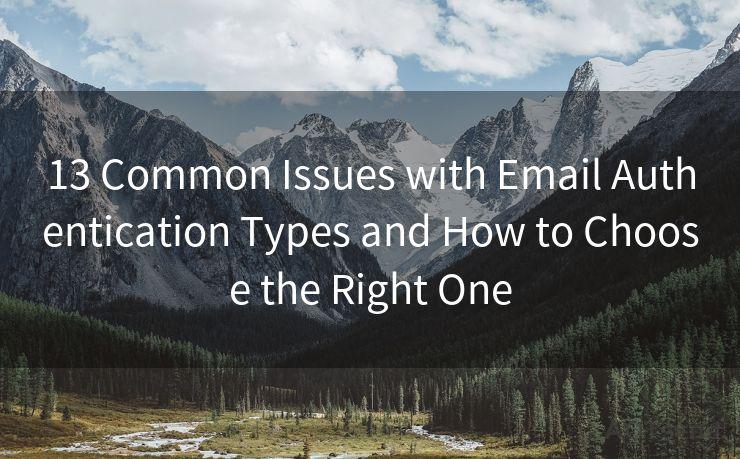13 Common Issues with Email Authentication Types and How to Choose the Right One




Email authentication is crucial for securing email communications and preventing spoofing and phishing attacks. However, with various authentication types available, choosing the right one can be confusing. In this article, we'll explore 13 common issues associated with email authentication types and provide guidance on selecting the most suitable method for your needs.
1. Understanding Email Authentication
Email authentication involves verifying the origin and integrity of an email message. It ensures that the email comes from a trusted source and hasn't been tampered with during transit. Common email authentication methods include SPF (Sender Policy Framework), DKIM (DomainKeys Identified Mail), and DMARC (Domain-based Message Authentication, Reporting, and Conformance).
2. Issue 1: Complexity of Setup
Implementing email authentication can be complex, especially for those unfamiliar with DNS records and email server configurations. Each authentication method requires specific DNS record updates, which can be daunting for non-technical users.
3. Issue 2: Compatibility Problems
Not all email servers and clients support all authentication types. This can lead to compatibility issues, where emails may fail authentication or be marked as spam if the receiving server doesn't recognize the authentication method used.
4. Issue 3: SPF Record Limits
SPF records have a limit on the number of DNS lookups they can perform. Exceeding this limit can cause authentication failures, even if the email is legitimate.
5. Issue 4: DKIM Key Management
DKIM requires managing cryptographic keys, which can be challenging. Losing or mismanaging these keys can result in authentication failures.
🔔🔔🔔
【AOTsend Email API】:AOTsend is a Managed Email Service for sending transactional emails. Support Email Types: reminders, authentication, confirmations, notifications, verification codes, invoices, password resets, account activations, billing statements, two-factor authentication (2FA), and one-time passwords (OTP) emails, etc. $0.28 per 1000 Emails. 99% Delivery, 98% Inbox Rate.
You might be interested in:
Why did we start the AOTsend project, Brand Story?
What is a Managed Email API, How it Works?
Best 25+ Email Marketing Platforms (Authority,Keywords&Traffic Comparison)
Best 24+ Email Marketing Service (Price, Pros&Cons Comparison)
Email APIs vs SMTP: How they Works, Any Difference?
6. Issue 5: DMARC Reporting Overload
DMARC generates reports on email authentication results. However, if not properly configured, these reports can flood your inbox, causing an information overload.
7. Issue 6: False Positives and Negatives
Sometimes, legitimate emails may fail authentication (false positives), while spam emails may pass (false negatives). This can be frustrating for both senders and recipients.
8. Choosing the Right Authentication Type
To choose the right authentication type, consider your specific needs and technical expertise. SPF is relatively simple to implement but has limitations. DKIM provides stronger authentication but requires key management. DMARC offers comprehensive reporting but can be complex to set up.
9. Simplifying Email Authentication
To simplify email authentication, consider using tools and services that automate the process. These tools can help you generate and manage DNS records, keys, and reports, reducing the complexity of manual setup.
10. Testing and Monitoring
Regularly test your email authentication setup to ensure it's working correctly. Monitor DMARC reports to identify any issues and take prompt action.

11. Staying Up to Date
Email authentication standards and best practices evolve. Stay up to date with the latest developments to ensure your authentication methods remain effective.
12. Educating Users
Educate your users about email authentication and its importance. This awareness can help reduce the risk of phishing attacks and improve overall email security.
13. Conclusion
Email authentication is crucial for securing email communications. By understanding the common issues associated with different authentication types and choosing the right method for your needs, you can enhance your email security and protect yourself from spoofing and phishing attacks.




Scan the QR code to access on your mobile device.
Copyright notice: This article is published by AotSend. Reproduction requires attribution.
Article Link:https://www.mailwot.com/p3883.html



